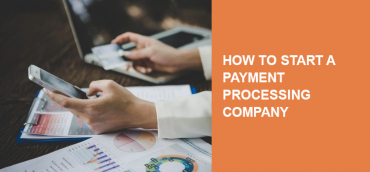With Visa and MasterCard chargeback monitoring systems, merchants might get in trouble should they exceed an agreed upon chargeback limit.
According to the “Chargeback Management Guidelines for Visa Merchants”, “If a merchant meets or exceeds specified chargeback thresholds, its acquirer is notified in writing.
First notification of excessive chargebacks for a specific merchant is a warning. If actions are not taken within an appropriate period to return chargeback rates to acceptable levels, Visa may impose financial penalties on acquirers that fail to reduce excessive merchant chargeback rates.”
Not to fall victim to numerous penalties and fines, every merchant should prevent chargebacks. And he’d better do it before the time for dispute management comes.
The best chargeback prevention solutions
To be on the safe side, merchants should use the assistance of a reliable Payment Service Provider. We recommend to opt for one with an advanced fraud and chargeback prevention system or hire a team of in-house professionals to deal with the risks of fraud and chargebacks inside the company. It is a massive chunk of work one just cannot afford not paying enough attention to.
While hiring an in-house team is a somewhat time-consuming and an expensive idea, getting a reliable PSP to help you can be a much easier choice (and it will keep your pockets full as long as you shop around and choose the one with the best rates and offers).
You might also like “Get started with the payment gateway on your site“.
Nevertheless, no matter what option you consider, it’s in your interest to learn your way around fraud and chargeback prevention measures. And in this article, we will explain what a typical system aiming to eliminate the risks looks
How does fraud and chargeback prevention work?
The fundamental principle behind the fraud and chargeback prevention lies in assigning a “score” to every customer. For each action or an exceeded limit, the client gets a point (or more depending on the activity). The team specializing in fighting and preventing chargebacks and fraud calculates the score to identify how safe it is to let a specific customer make a purchase or how likely he is to request a chargeback later. The higher the score is, the more likely is the fraud.
The acceptable score that defines a potential customer as “safe” varies from business to business. Thus, high-risk merchants that, unfortunately, deal with chargebacks on a regular basis should definitely set the “acceptable score” level at a lower point to increase their safety. Otherwise, chargebacks will flow right in.
Technically speaking, there is a set of parameters PSPs and merchants themselves should make a part of the fraud and chargeback prevention system. Such parameters include but are not limited to:
1. Card level restrictions.
It is essential to imply these restrictions to prevent any fraudulent activity. Thus, you can set a limit on the number of attempts to pay with a single card per day. Along with that, you can set the limit on the number of purchases made with the same card per day, etc.
These simple restrictions can help you identify possible chargebacks and eliminate the risk before the problem even announces itself.
2. Email level restrictions.
Another way to prevent fraudulent activity is by adding email level restrictions. These include a limit on the number of purchases per week, number of attempts to pay with a single card under different emails per week, etc.
People using separate emails but a single card when paying for goods and services are more likely to be involved in some kind of a fraudulent activity than those with only one email linked to the credit card.
3. IP level restrictions.
Thanks to the advances in the technology we all enjoy these days, it is now possible to monitor the IP address of a particular user. Thus, the merchant can identify where a user is purchasing from. Moreover, he can check whether this IP is not qualified as dangerous or blacklisted.
Among the restrictions, a merchant can apply here are the IP blacklists, forbidden IP, and BIN countries, etc. The list is much longer, but these are the ones to take into account first.
Every smart merchant should have these restrictions woven into their fraud and chargeback prevention system. But there is more to this.
Companies like Sift Science and MaxMind have recently introduced us to the cutting-edge technologies that allow detecting suspicious activity from an IP address in real-time.
One can easily incorporate these technologies into his existing restrictions and limitations in the fraud and chargeback prevention system.
Also read: “The ins and outs of web hosting payment processing“.
Besides, learning about new possibilities services provided by even these two companies is worth your time. Their services can save you the hassle of dealing with the chargeback and any possible fraud.
Now, let’s dive into the details of each one of them.
MaxMind services
This service uses the feedback provided by merchants in real-time as a warning signal to the rest of the merchants in the network. Thus, by reporting fraudulent activity and assigning a high score to one client, you prevent chargebacks for your own business and protect the rest of the merchants online.
Another great thing about MaxMind services is that it is a single automated platform with clear and easy to use back office. The merchant has access to all the transactions. He can check which transactions were canceled due to suspected fraudulent motives behind them.
If needed, he can call the client whose transaction was denied to find out whether the system indeed detected fraud or misread the client’s actions.
Among the main features which make MaxMind stand out are:
- Matching of the Bank Identification Number to the country;
- Email checking;
- RiskScore or the assessment of the likelihood of fraud;
- IP addresses checking;
- Proxy detection.
Though MaxMind is unique, there is another service every merchant should learn about.
Sift Science services
Unlike the MaxMind approach based on the scoring system and collaboration of all merchants inside the network, Sift Science is a real-time machine learning system. The primary goal of the system is to learn and adapt within the shortest time. All this is done to increase the precision of the results.
The system collects all the information of what a healthy behavior online is. Then it analyzes it and, based on the received data, examines the behavior of the clients.
Thus, actions, most strongly correlated with the criminal activity, will be flagged. Later each transaction will be weighed against that data.
Thanks to the machine learning system, Sift Science is an excellent tool in the fight against chargeback and fraud prevention.
Apart from the methods we mentioned above, Visa states in one of its guides for merchants that “Most chargebacks can be attributed to improper transaction-processing procedures and can be prevented with appropriate training and attention to detail.”
Over to you
You can check out their suggestions on the best practices to fight the chargeback. And remember to add my tips and recommendations to the list. With these two things combined, you can feel safe and secure with your prevention system.





